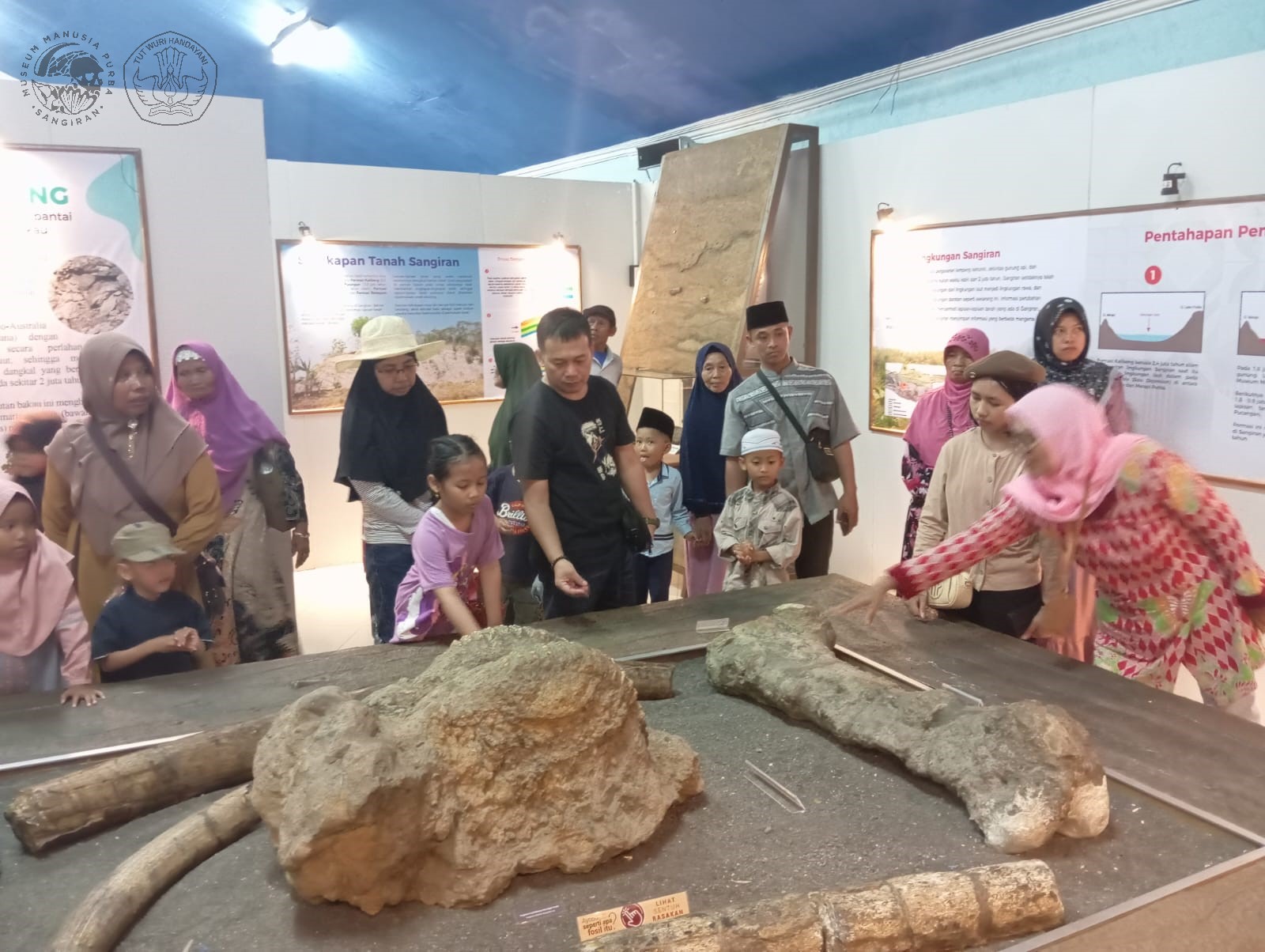
In etymology, fossil means as remain of animal’s bone or plant from early time that petrified in ground layer (Badudu and Zein, 2001). An object can be called as fossil if it have some requirements such as; remain of organism, conserved naturally, generally in hard form/texture, contain a little oxygen level, and more than 10.000 years old (Palmer, 2002). Fossil as importance inheritance for science also has an interesting side, because it present a story about behind of form, size and also discovery. There were a lot of myth of fairytale from every region of this world that started from discovery, imagination and interpretation about fossil. The myth about fossil can be seen in some country, such as China, Mediterranean area, Greek, even in Indonesia.
Story about fossil from China gave appeared about dragon, once upon a time in China, dinosaur’s fossil claimed as “Dragon’s Bone”, so it believed really exist. In the history, digging dinosaur’s fossil in a location and even it documented in a document (3 BC/Before Century) by historian from China, Chang Qu. Because dragon is sacred-mythology creature in China, everything that relate with dragon claimed has power, include the bones. Therefore, dragon’s fossil was looking for and used for as ingredients of traditional medicine.
The discovery of early elephant’s cranium in Sicilia Island, Italian (include Mediterranean area, South Europe) gave appeared cyclop legend, a giant with one eyes from old Greek. A very big early elephant’s cranium claimed as giant’s head. Anatomical, the elephant cranium has a wide nasal cavity (for trunk line), that define as eyes cavity, because it was on forehead.

Greek nation also learn early fossil and supposed make it as source of their myth inspiration. A rasher of thigh bone from early animal became source of inspiration in myth making by old Greek nation. Bone rasher that well known as Nichoria supposed a part of early mammal body lived in South Greek about 1 million years ago. After old Greek found them, then appeared wild creature in Greek’s classic mythology that inspired from those bones.

(Sumber: Adrienne Mayor. 2000. The First Fossil Hunters: Paleontology in Greek and Roman Times. Princeton and Oxford: Princeton University Press)
An early giant fossil, like Nichoria, probably became source of inspiration and imagination for creating wild creature legend, from classic mythology. There is a relation between some Greek’s classic myths with the proof that showed prehistory fossil found in a same location with myth growing about the appearance of the Giant creature. Old Greek supposed found those fossil in young coal hole in a region that well known with Megalopolis hollow, in prehistory study it well known as “Fight area of Giants”. Because there were a lot of Giant bones fossil gave appeared a myth about killed all of giant soldiers because of thunder by Zeus God, one of main God in Greek’s classic mythology (Mayor, 2000).
“Fight Area of Giants” also found in Indonesia, exactly in Sangiran (Sragen) and Patiayam (Kudus). Both of this region is an important site in Indonesia. Sangiran society knew giant definition with “Buto”. Related with fossil, then appeared a myth of Balung Buto in society. Balung Buto is a word in Javanese, Balung means bone, meanwhile Buto means giant. Therefore, literally Balung Buto means Giant bone.
Balung Buto is not only well known as giant bone, but also recorded in Sangiran’s society mind in a myth form. During 10 years, Sangiran society believed to myth that tell big fight between a knights called Raden Bandung with a giant lead by Tegopati king that happened in Sangiran’s hill area. In that fight, there were a lot of giant fell (dead) and grave into a hill. Therefore, big fossil that found in Sangiran hill’s slope called Balung Buto (Sulistyanto: 2003). Besides that, same events in this myth also documented in Sangiran’s region name by some society, the truth is still believed.
Balung Buto’s myth is also famous in Patiayam society (about 74 km north side from Sangiran’s site). Myth narration that believed in Patiayam’s society was same with Sangirans’, that was tell about fight between giant and knight. In the end of fight, the giant was lost but because of his power he can live again after the dead if the whole body in unity. Therefore, giant’s body cut and then separated one another, and finally the proove of bones was founded (Siswanto, 2013). The difference between Balung Buto in Patiayam and Sangiran myth is, in Patiayam did not mention the character, meanwhile in Sangiran mention the character, the name were Raden Bandung and Tegopati. Some of those myths another side of fossil for society and knowledge. Geographical, the location of both myth were far one another, but there were some similarities, such as; imagination and interpretation about giant that always found in those myth. The myth about fossil can increase society’s knowledge, especially myth as a human imagination product and culture phenomena. (Muhammad Mujibur Rohman). translated by: Mutiara Sholikah




